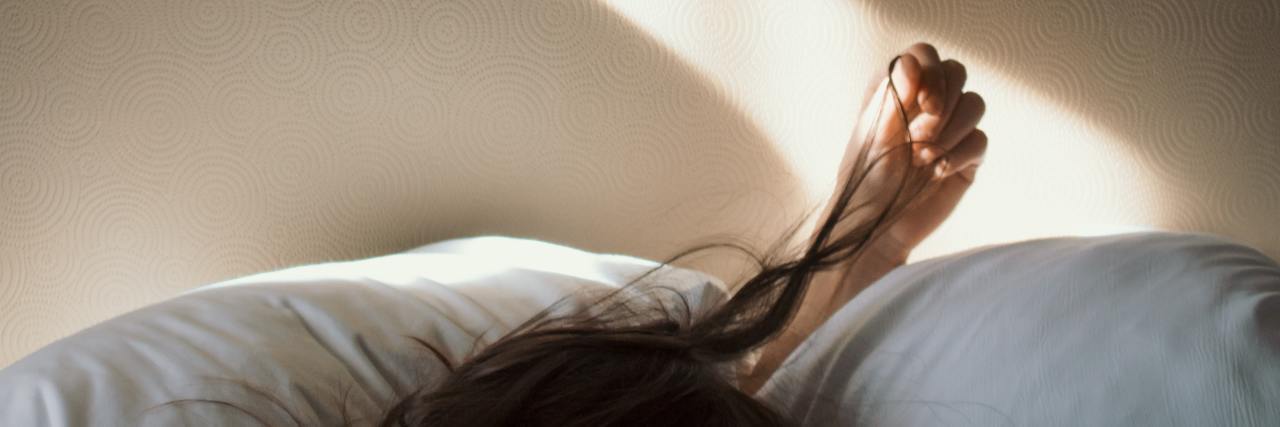3 Tips for Dealing With Trichotillomania and Dermatillomania During COVID-19
Editor's Note
If you struggle with a body-focused repetitive behavior, the following post could be potentially triggering. You can find resources at The TLC Foundation for Body-Focused Repetitive Behaviors.
Hair-pulling (trichotillomania), skin-picking (dermatillomania) and nail-biting (onychophagia) are body-focused repetitive behaviors (BFRBs). The easiest way to explain it is that our restless mind subconsciously triggers our restless hands. These behaviors happen because of emotional triggers. Emotional triggers can include stress, anxiety and boredom.
Right now — during this time of the coronavirus (COVID-19) home isolation — stress, anxiety and boredom levels are collectively on the rise. Naturally then, we are seeing — through online chatter and our support community of thousands of BFRBers — an increase in hair-pulling, skin-picking and nail-biting behaviors.
After 20 years of hiding my hair-pulling, I have learned to manage my trichotillomania and helped thousands of others do the same. We are in such difficult times that I want to make sure people out of our network have access to these strategies.
These strategies are for people with BFRBs who are ready to do the work to make a positive change in their lives. We must remember trichotillomania, dermatillomania and other BFRBs do not have a cure. In fact, no mental health condition has a “cure.” Instead of seeking a cure, seek to learn to take control!
The keys to taking control of BFRBs are in awareness of these very trancelike behaviors and in understanding your personal triggers.
Awareness is necessary because you can’t actually take action to change if you don’t realize an unwanted behavior is happening.
Understanding is necessary because it will help you define the exact action to take.
Once you are aware, here are three tips for BFRBers during our isolation due to COVID-19:
1. Use the clues to figure out your best replacement strategies.
To truly retrain your brain away from your BFRB, you must give your brain something that brings as much satisfaction.
This replacement will be different for everyone and is dependent on the BFRB scenario. To figure out your best replacement strategy, ask yourself the following questions when you realize you are engaging in your BFRB:
- What am I feeling/thinking about right now?
- What am I doing right now?
- Where am I?
- Who am I with?
- What time is it?
The answers to these questions will inform your best strategy.
No joke, it took me over 20 years to figure this out all because I was asking myself the wrong question: “What is wrong with me?”
2. Build your toolkit.
As you go through the exercise of “using the clues,” create a cheat sheet of the replacement strategies you start identifying as right for you. I personally opt for strategies that don’t require accessories: deep breathing, walking, stretching, drinking water. In this way, you are always prepared. But, if physical items help you (like fidget toys, hairbands or gloves) then consider creating a “pause pack” to keep in your car, your bedroom, your living room, so you always have your strategies handy.
3. Remember, practice makes progress.
You can’t make a change if you don’t work for it. As you get to know your BFRB triggers and practice healthier choices, you will more easily surface a positive replacement strategy at the right time and place.
But don’t get tripped up with a “BFRB-free” mentality. “Free” does not really mean freedom because it places false expectations and pressures of perfection on us, resulting in increased stress and repeating the cycle of leveraging a BFRB to self-soothe.
By practicing daily, I hope you’ll find, as I have, that taking control of your BFRB becomes easier and easier with time, helping you prepare for intensely triggering times, like these.
I hope BFRBers reading this will find these strategies helpful and I also hope everyone else reading will realize these strategies transcend condition.
I wish you all love, strength and awareness.
Struggling with anxiety or an anxiety disorder due to COVID-19? Check out the following articles from our community:
Photo by Hayley Catherine on Unsplash

